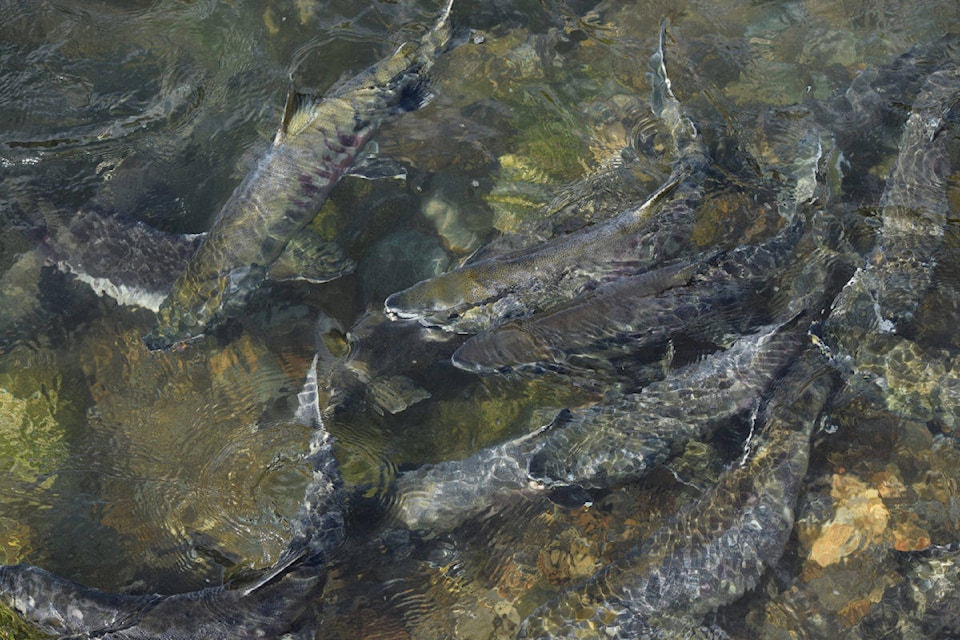A significant rock slide in B.C.’s Fraser River appears to be blocking salmon from migrating upstream to spawning grounds, raising concerns about impacts to species that are already in peril.
The federal and B.C. governments say they’re working together to assess the impacts and come up with responses to the slide that happened around June 21 or 22 in a remote area near Big Bar, just west of Clinton.
READ MORE: Rock slide in B.C. river may hinder salmon passage
The obstruction has created a five-metre waterfall. A Fisheries and Oceans Canada representative said Friday the department has installed acoustic monitoring equipment to determine if fish are able to pass up through the slide to the upper part of the river.
“Our initial assessment is that chinook salmon are holding below the rock slide and they’re having difficulty getting up past the falls,” said Bonnie Antcliffe, associate regional director general, on a conference call with reporters.
“However, until we have more information from the acoustic monitoring equipment, it’s really difficult to confirm the extent of fish passage. Some fish may be getting up.”
She said the department is planning to install a second acoustic monitoring device below the slide.
The department is looking at several options to address the problem, including monitoring the site to determine if fish are able to pass through the area when the water level drops naturally in the coming weeks, she said.
It’s also considering reducing the velocity of water or the height of the falls, or providing passage for fish through engineering and rock work.
Another option would be moving the fish by truck from below the slide to above it, but that would be difficult because it is a remote area with little road access, she said.
“This is an extremely important situation and it’s also very dynamic and it’s very complex,” Antcliffe said. “At this point, we’re doing everything we can to ensure we address the issue quickly but also in an appropriate manner to ensure a successful outcome for fish.”
Jennifer Davis, with the provincial Forests Ministry, said the natural turbidity of the Fraser River has made it challenging to determine how many fish are passing through. The area is also very remote, with steep canyon slopes and limited access for helicopters, she said.
Scientists on site are working hard to determine the magnitude of the problem and what responses can happen, Davis added, and they’re also co-ordinating with First Nations and communities.
“There’s a whole variety of things that can be looked at, but it’s a bit premature to jump into which action it would be.”
There are a number of stocks, including chinook, steelhead, coho and sockeye that would migrate above the barrier for spawning, and Fisheries and Oceans already has concerns about some of those species and has implemented conservation measures to protect them, said the department’s Andrew Thomson.
“That’s what’s really at risk here, is further impairment of the stocks that are already in a critical zone,” he said.
While there’s no concrete figure on how many salmon are currently impacted, Thomson said typically at this time the run that would be most prominent would be chinook, and it’s believed to be the early part of their migratory window.
But later in summer, Thomson said scientists would expect to see a very large number of chilko sockeye moving through the area — potentially upward of a million fish.
“Depending on the stock numbers, there could be quite a number of fish that would be below this barrier.”
Laura Kane, The Canadian Press
